No products in the cart.
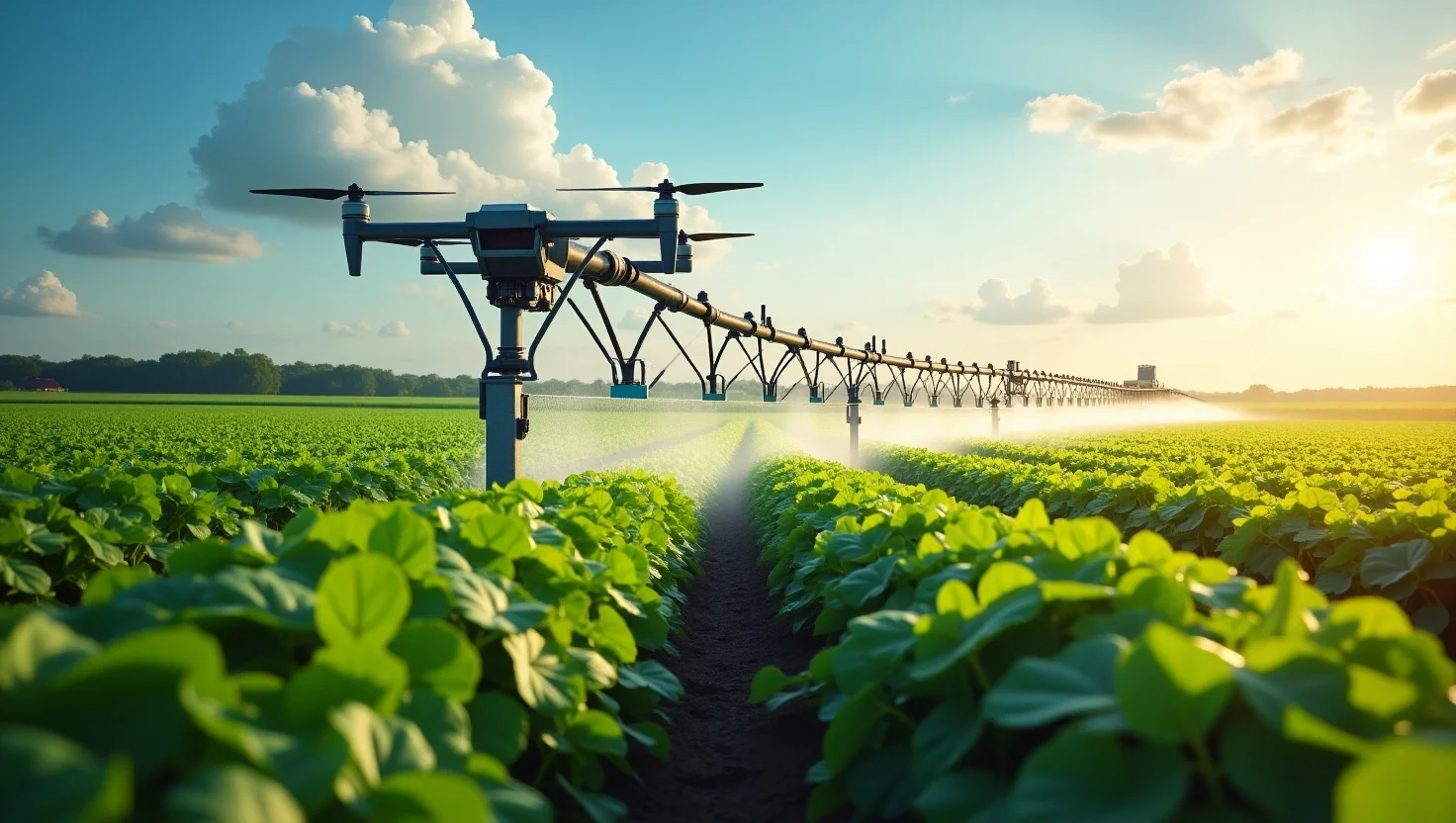
1. Introduction
In today’s world of unpredictable climate patterns and rising global food demand, water scarcity has become a major threat to agriculture. Traditional irrigation methods, often based on guesswork or fixed schedules, lead to overwatering, under-irrigation, and substantial resource waste. It’s estimated that over 60% of irrigation water is lost due to inefficiencies in outdated systems. For farmers striving to maintain crop health and boost yields, this isn’t just wasteful—it’s costly.
Enter AI-powered smart irrigation systems, a groundbreaking solution that combines real-time data, machine learning, and IoT technologies to transform how water is managed in farming. These systems monitor soil moisture, track weather forecasts, and analyze crop water needs, ensuring that every drop of water is used precisely when and where it’s needed. The result? Higher yields, reduced water usage, and more sustainable farming practices.
This shift toward data-driven agriculture isn’t just a trend—it’s a necessity. With water becoming an increasingly limited resource, precision farming using artificial intelligence is reshaping modern agriculture by making irrigation not only smarter but also more cost-efficient and environmentally friendly.
Throughout this article, we’ll explore how AI works behind the scenes of smart irrigation, its real-world applications, success stories, and how it’s enabling farmers, both large-scale and smallholder, to thrive in the face of growing challenges.
2. Understanding Smart Irrigation Systems
At its core, smart irrigation is about precision—giving plants exactly the amount of water they need, exactly when they need it. Traditional irrigation systems often operate on timers or static schedules, but AI-powered smart irrigation systems adapt in real time based on environmental data, crop conditions, and historical patterns. This results in more efficient water use and better crop outcomes.
Smart irrigation systems use a blend of sensors, IoT-enabled devices, and cloud-based software to monitor factors like soil moisture levels, weather forecasts, temperature, and plant health. These systems feed continuous data to AI algorithms that analyze trends and make intelligent decisions about water delivery. For instance, if rain is predicted, the system may reduce or delay irrigation. If soil moisture drops below optimal levels, watering is automatically triggered.
What sets AI irrigation apart from simple automation is its ability to learn and improve over time. Through machine learning, these systems refine their decisions by studying how different crops respond to watering patterns, enabling more tailored and crop-specific irrigation schedules.
Farmers using these systems can access detailed dashboards or mobile apps that provide real-time insights, alerts, and remote control, adding convenience to efficiency.
This smart, data-driven approach not only conserves water but also reduces costs and improves crop productivity, aligning perfectly with the goals of sustainable agriculture.

3. How AI Enhances Irrigation Efficiency
Artificial Intelligence is doing more than just automating irrigation—it’s making it smarter, faster, and far more efficient. By leveraging machine learning models, AI can interpret complex environmental data to make intelligent decisions about when, where, and how much to irrigate. The result? A significant reduction in water waste and healthier crops.
One of the biggest advantages of AI in smart irrigation is predictive analytics. Rather than reacting to conditions, AI can forecast future water needs based on historical data, real-time weather updates, and current soil moisture levels. This proactive approach prevents overwatering during rainy conditions and ensures timely irrigation during dry spells, essential for precision farming.
Another key feature is zone-based irrigation, where AI identifies varying needs within different sections of a field. This allows for targeted watering that accounts for soil type, crop variety, and sun exposure—something traditional systems can’t achieve.
AI also enables automated decision-making, reducing the need for constant manual monitoring. Systems can detect anomalies such as leaks or malfunctions and send real-time alerts to farmers, helping avoid costly water loss or crop damage.
These intelligent systems are also scalable. Whether managing a small greenhouse or a large commercial farm, AI adapts and learns to optimize water use efficiently over time, offering a major boost in irrigation performance.
4. Real-World Case Studies
While AI-powered smart irrigation may sound futuristic, it’s already being implemented successfully across the globe, with impressive results. Let’s look at a few standout examples where technology meets the field.
Case Study 1: Jain Irrigation Systems, India
Jain Irrigation, a leader in AgTech, has integrated AI and IoT technologies to serve thousands of farmers in India. Their smart irrigation platform collects data from soil sensors, weather stations, and crop monitoring tools, using AI to recommend precise watering times. As a result, participating farmers reported up to 30% water savings and a 20–25% increase in crop yields, particularly in water-stressed regions.
Case Study 2: CropX Technologies, USA
CropX, an American precision agriculture company, combines machine learning algorithms with real-time soil analytics. Their platform tailors irrigation plans to individual zones within a field, improving efficiency. In one pilot study with corn growers, farmers achieved 50% more water efficiency without compromising yields.
Case Study 3: Arable + IBM Watson
By combining Arable’s climate sensing tools with IBM Watson’s AI platform, this partnership has enabled predictive irrigation scheduling for vineyards and high-value crops. The AI system considers factors like humidity, solar radiation, and plant stress, making irrigation smarter and more data-driven.
These examples show that AI irrigation systems are not just viable—they’re game-changing. They prove that investing in smart farming technologies yields both environmental and economic benefits.

5. Challenges & Limitations
While AI-powered smart irrigation holds immense potential, its adoption doesn’t come without hurdles, especially for small and mid-scale farmers. Understanding these limitations is essential for creating more inclusive, practical solutions.
5.1 High Initial Costs
One of the biggest barriers is the upfront investment required. Smart irrigation systems often involve installing soil sensors, weather stations, and cloud-based software—all of which can be expensive. Though long-term savings in water and energy are proven, the initial cost of implementation may deter smallholder farmers.
5.2 Connectivity Issues in Rural Areas
AI-driven irrigation systems rely on stable internet connectivity to transmit real-time data from fields to dashboards. In many rural or remote regions, weak network infrastructure can hinder system performance, limiting the scalability of smart irrigation.
5.3 Technical Knowledge Gap
The use of AI and IoT in agriculture requires a certain level of digital literacy. Many farmers may lack the training to interpret data or operate software platforms, making user-friendliness and support essential for wider adoption.
5.4 Data Privacy Concerns
As these systems gather massive amounts of farm-level data, issues of data ownership and privacy emerge. Farmers need clear policies and safeguards to ensure their information isn’t misused.
Addressing these challenges will be key to expanding the reach of precision irrigation and creating more accessible smart farming tools that benefit all agricultural communities.
6. Future of AI in Irrigation
As technology continues to evolve, the future of AI-powered smart irrigation holds exciting possibilities for farmers worldwide. From advanced predictive models to the integration of drones and satellites, the next generation of smart irrigation promises to be even more accurate, efficient, and accessible.
6.1 Integration with Drones and Satellite Imaging
AI will soon integrate more deeply with drone technology and satellite imaging to provide hyper-precise data. Drones can survey entire fields, while satellite images offer a bird’s-eye view of moisture distribution. Combining these technologies with AI algorithms will allow farmers to not only monitor soil moisture but also detect crop stress, disease outbreaks, and other critical factors affecting irrigation.
6.2 AI-Powered Climate Adaptation Systems
In the coming years, AI will play a key role in climate adaptation. By analyzing historical data and future forecasts, AI will help farmers predict long-term weather patterns and adjust irrigation practices accordingly. This will be essential as climate change continues to cause unpredictable shifts in rainfall and temperature.
6.3 Mobile Platforms for Smallholder Farmers
AI-powered irrigation technology will become more accessible, especially for smallholder farmers, through mobile platforms. These apps will enable farmers with limited technical knowledge to monitor, control, and optimize their irrigation schedules from their smartphones, putting advanced tools in the hands of those who need them most.
6.4 Sustainable Agriculture
As AI systems become more integrated into farming practices, they will increasingly help achieve sustainable agriculture goals. By using less water, reducing the carbon footprint, and improving soil health, smart irrigation will contribute significantly to making agriculture more environmentally friendly and economically viable.
With continued advancements, AI will not just transform irrigation systems but also shape the future of farming itself, making agriculture smarter, more sustainable, and better equipped to meet the challenges of a changing world.

7. Conclusion + Call to Action
AI-powered smart irrigation is revolutionizing the way we approach farming, offering a sustainable, efficient solution to one of agriculture’s most pressing challenges: water management. By using real-time data, machine learning, and precision irrigation techniques, farmers can optimize water usage, boost yields, and reduce costs, all while promoting more sustainable agricultural practices.
The real-world success stories from around the globe demonstrate the tangible benefits of this technology. Whether it’s saving water, improving crop health, or increasing profits, AI is clearly the way forward for modern agriculture. However, challenges like high initial costs, connectivity issues, and the need for greater digital literacy must be addressed to make this technology accessible to farmers everywhere.
Looking to the future, the integration of AI with other technologies like drones, satellites, and mobile platforms will further enhance its capabilities, making it easier than ever for farmers to make data-driven decisions. As we continue to advance in these areas, the potential for sustainable farming and precision agriculture is limitless.
Are you ready to join the agricultural revolution? Embrace AI-powered irrigation today, and take the first step toward a more efficient, sustainable future for your farm.
FAQs:
Q1. What is AI-powered smart irrigation?
AI-powered smart irrigation systems utilize artificial intelligence, sensors, and real-time data to optimize water usage in agriculture. These systems monitor soil moisture, weather conditions, and crop requirements to deliver precise watering, reducing water waste and enhancing crop health.
Q2. How does AI improve irrigation efficiency?
AI enhances irrigation efficiency by analyzing data from various sources to predict optimal watering times and amounts. This predictive capability ensures that crops receive the right amount of water at the right time, leading to improved yields and water conservation.
Q3. What are the benefits of using AI in irrigation?
The key benefits include:
– Reduced water consumption by up to 25%
– Increased crop yields by 20–30%
– Lower energy costs
– Enhanced sustainability and environmental impact
– Improved resource management and cost savings
Q4. What are the challenges of implementing AI irrigation systems?
Challenges include:
– High initial setup costs
– Dependence on reliable internet connectivity
– Need for technical knowledge and training
– Data privacy and security concerns
Q5. What does the future hold for AI in irrigation?
The future of AI in irrigation looks promising, with advancements such as:
– Integration with drone and satellite technologies
– Development of mobile platforms for smallholder farmers
– Enhanced climate adaptation systems
– Continued progress towards sustainable agriculture
Related Articles
Soil & Water Management
How AI Can Help Young Farmers Succeed in U.S. Agriculture
1. Introduction: Farming in the United States is at a crossroads. With...
Soil & Water Management
AI and Sustainable Farming: Can Technology Save the Planet?
1. Introduction: Can the very industry that feeds the world also be...
Soil & Water Management
AI for Seed Selection: Choosing the Right Crops for Maximum Yield
1. Introduction: Every successful harvest begins with one critical decision, choosing the...
Soil & Water Management
AI in Soil Health: How Smart Tech is Improving Crop Productivity
1. Introduction: Healthy soil is the foundation of a productive farm, but...
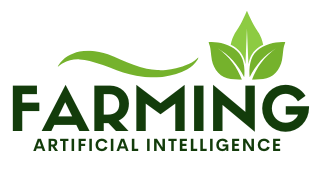
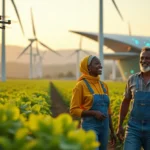

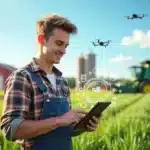

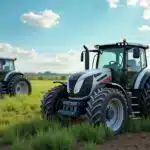

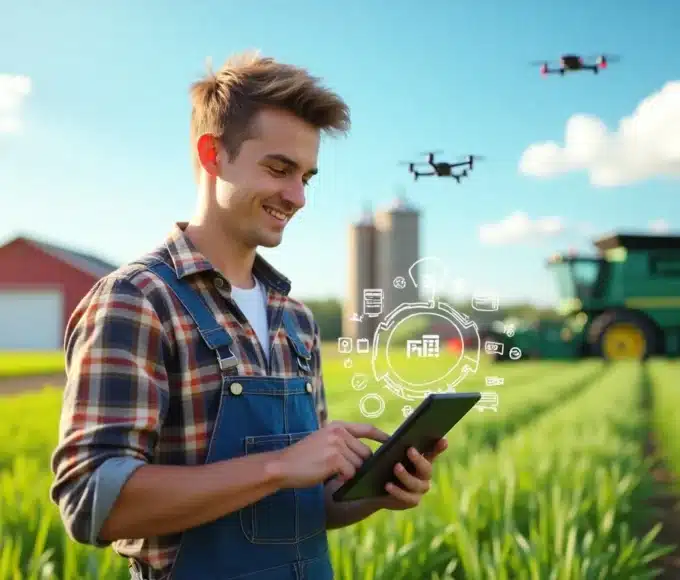
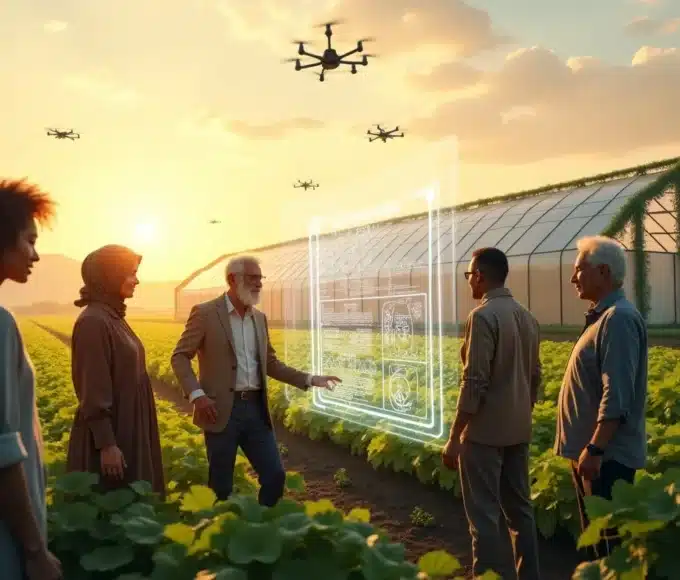
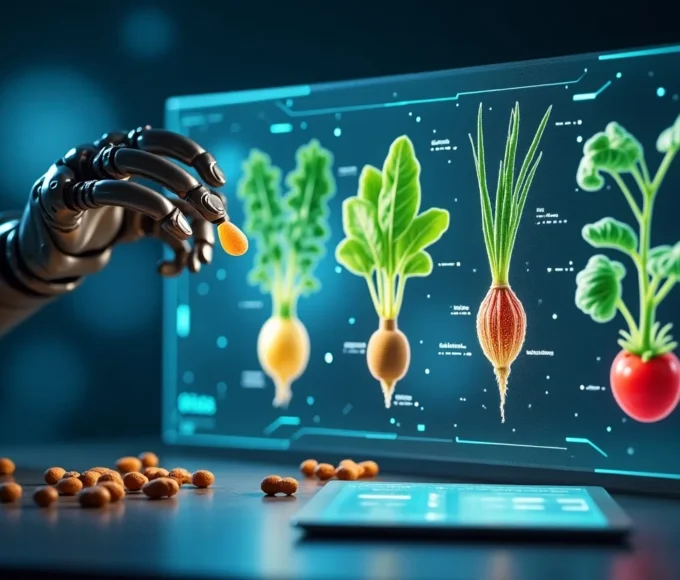
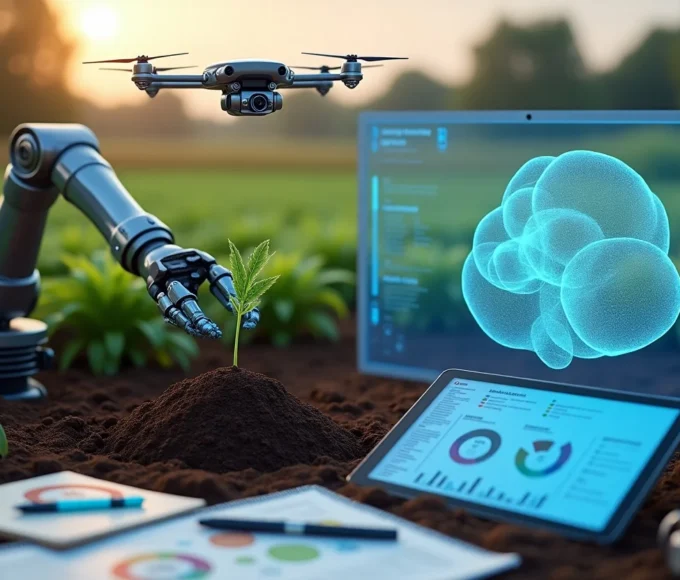
1 Comment